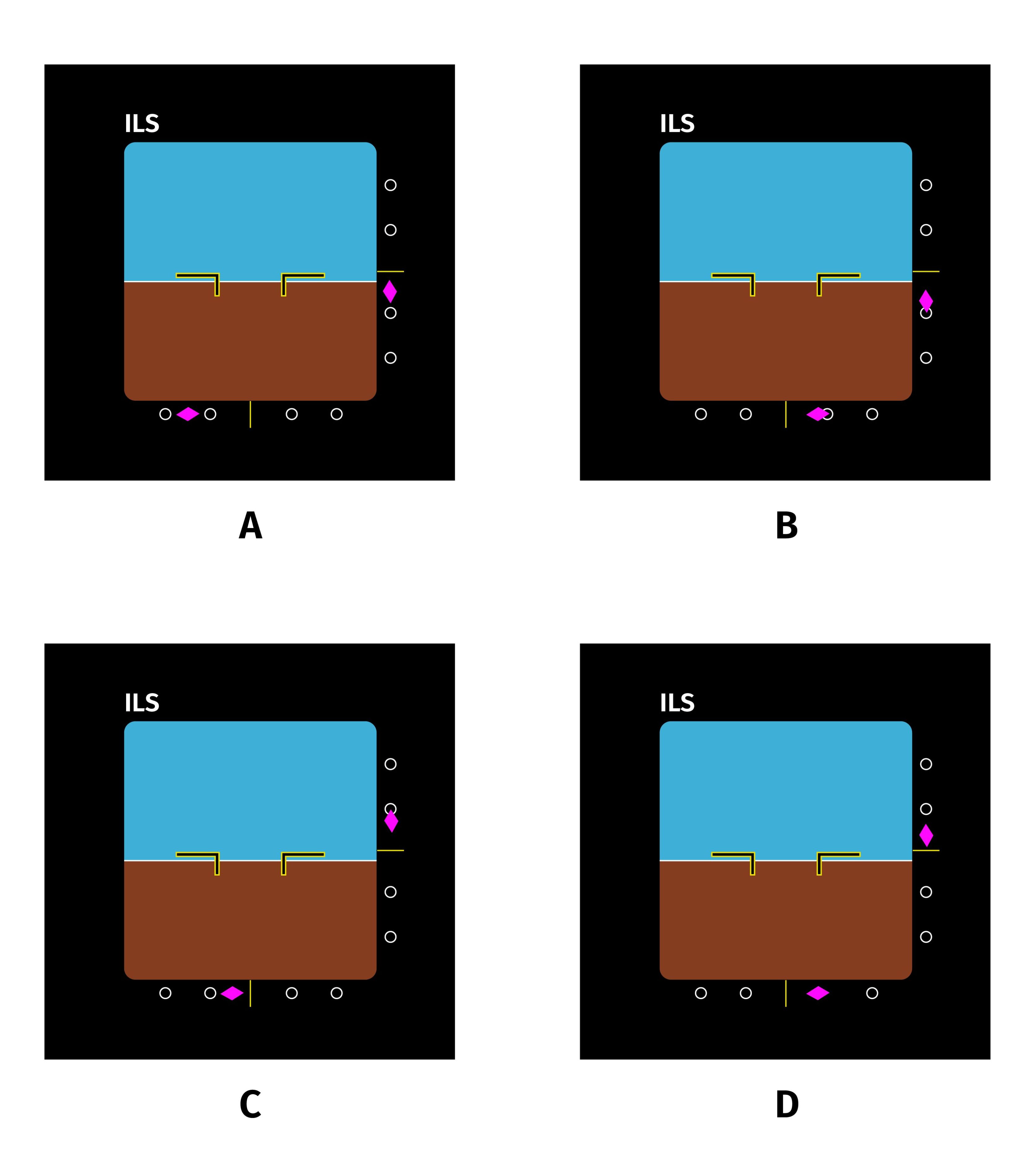Quiz
Quiz

Quiz
Quiz
Quiz
Quiz
Quiz
Quiz
Quiz
Quiz
CB-IR(A) kompetenzbasierte Instrumentenflugberechtigung - Funknavigation Übungstest schaltet alle Online-Simulator-Fragen frei
Vielen Dank, dass du dich für die kostenlose Version des CB-IR(A) kompetenzbasierte Instrumentenflugberechtigung - FunknavigationPraxistests entschieden hast! Vertiefe dein Wissen über CB-IR(A) kompetenzbasierte Instrumentenflugberechtigung Simulator weiter; Indem du die Vollversion unseres CB-IR(A) kompetenzbasierte Instrumentenflugberechtigung - Funknavigation Simulators freischaltest, kannst du Tests mit über 804 ständig aktualisierten Fragen absolvieren und deine Prüfung problemlos bestehen. 98% der Personen bestehen die Prüfung im ersten Versuch, nachdem sie sich mit unseren 804 Fragen vorbereitet haben.
KAUFE JETZTWas kannst du von unseren CB-IR(A) kompetenzbasierte Instrumentenflugberechtigung - Funknavigation Übungstests erwarten und wie bereitest du dich auf eine Prüfung vor?
Die CB-IR(A) kompetenzbasierte Instrumentenflugberechtigung - Funknavigation Simulator-Übungstests sind Teil der CB-IR(A) kompetenzbasierte Instrumentenflugberechtigung Datenbank und bieten die beste Möglichkeit, sich auf jede CB-IR(A) kompetenzbasierte Instrumentenflugberechtigung - Funknavigation-Prüfung vorzubereiten. Die CB-IR(A) kompetenzbasierte Instrumentenflugberechtigung - Funknavigation Übungstests bestehen aus 804 Fragen, die in 5 Themen unterteilt sind, und wurden von Experten verfasst, um dir zu helfen und dich darauf vorzubereiten, die Prüfung beim ersten Versuch zu bestehen. Die CB-IR(A) kompetenzbasierte Instrumentenflugberechtigung - Funknavigation Datenbank enthält Fragen aus früheren und anderen Prüfungen, sodass du üben kannst, vergangene und zukünftige Fragen zu simulieren. Die Vorbereitung mit dem CB-IR(A) kompetenzbasierte Instrumentenflugberechtigung - Funknavigation Simulator gibt dir auch eine Vorstellung davon, wie viel Zeit du benötigst, um jeden Abschnitt des CB-IR(A) kompetenzbasierte Instrumentenflugberechtigung - Funknavigation Übungstests abzuschließen. Es ist wichtig zu beachten, dass der CB-IR(A) kompetenzbasierte Instrumentenflugberechtigung - Funknavigation Simulator die klassischen CB-IR(A) kompetenzbasierte Instrumentenflugberechtigung - Funknavigation Studienführer nicht ersetzt; Der Simulator bietet jedoch wertvolle Einblicke in das, was dich erwartet und wie viel du arbeiten musst, um dich auf die CB-IR(A) kompetenzbasierte Instrumentenflugberechtigung - Funknavigation-Prüfung vorzubereiten.
KAUFE JETZTDer CB-IR(A) kompetenzbasierte Instrumentenflugberechtigung - FunknavigationÜbungstest stellt daher zusammen mit unserem CB-IR(A) kompetenzbasierte Instrumentenflugberechtigung Übungstest ein hervorragendes Tool dar, um sich auf die eigentliche Prüfung vorzubereiten. Unser CB-IR(A) kompetenzbasierte Instrumentenflugberechtigung - Funknavigation Simulator hilft dir, deinen Vorbereitungsstand einzuschätzen und deine Stärken und Schwächen zu verstehen. Unten kannst du alle Quiz lesen, die du in unserem CB-IR(A) kompetenzbasierte Instrumentenflugberechtigung - Funknavigation Simulator findest, und wie unsere einzigartige CB-IR(A) kompetenzbasierte Instrumentenflugberechtigung - Funknavigation Datenbank aus echten Fragen besteht:
Info-Quiz:
- Quizname:CB-IR(A) kompetenzbasierte Instrumentenflugberechtigung - Funknavigation
- Gesamtzahl der Fragen:804
- Anzahl der Fragen für den Test:100
- Bestehendes Ergebnis:70%
- Anzahl der Themen:5 Themen
- Basic Radio Propagation Theory:133 Fragen
- Global Navigation Satellite Systems (GNSS):136 Fragen
- Performance-based Navigation (PBN):136 Fragen
- Radar:100 Fragen
- Radio Aids:299 Fragen
Mit unserer mobilen App kannst du dich auf die CB-IR(A) kompetenzbasierte Instrumentenflugberechtigung - Funknavigation-Prüfungen vorbereiten. Sie ist sehr einfach zu bedienen und funktioniert bei einem Netzwerkausfall sogar offline, mit allen Funktionen, die du zum Lernen und Üben mit unserem CB-IR(A) kompetenzbasierte Instrumentenflugberechtigung - Funknavigation Simulator benötigst.
Verwende unsere mobile App, die sowohl für Android- als auch für iOS-Geräte verfügbar ist, mit unserem CB-IR(A) kompetenzbasierte Instrumentenflugberechtigung - Funknavigation Simulator. Du kannst es überall verwenden und denke immer daran, dass unsere mobile App kostenlos und in allen Geschäften verfügbar ist.
Unsere mobile App enthält alle CB-IR(A) kompetenzbasierte Instrumentenflugberechtigung - Funknavigation Übungstests, die aus 804 Fragen bestehen, die nach 5 Themen unterteilt sind, und bieten außerdem Lernmaterial, um die Abschlussprüfung CB-IR(A) kompetenzbasierte Instrumentenflugberechtigung - Funknavigation mit garantiertem Erfolg zu bestehen. Unsere CB-IR(A) kompetenzbasierte Instrumentenflugberechtigung - Funknavigation-Datenbank enthält Hunderte von Fragen und CB-IR(A) kompetenzbasierte Instrumentenflugberechtigung Tests im Zusammenhang mit der CB-IR(A) kompetenzbasierte Instrumentenflugberechtigung - Funknavigation-Prüfung. Auf diese Weise kannst du überall üben, auch offline ohne Internet.
KAUFE JETZT